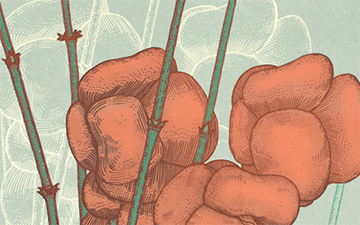Ephedra sinica (also known as Chinese ephedra or Ma Huang) is a plant species native to Mongolia,Russia (Buryatiya, Chita, Primorye), and northeastern China (Gansu, Hebei, Heilongjiang, Jilin, Liaoning,Nei Mongol, Ningxia, Shaanxi, Shanxi).[1][2]
Ephedra is a medicinal preparation from the plant Ephedra sinica.[1] Known in Chinese as ma huang (麻黃; pinyin: má huáng, which literally translates into English as “hemp yellowed”). Several additional species belonging to the genus ephedra have traditionally been used for a variety of medicinal purposes, and are a possible candidate for the Soma plant of Indo-Iranian religion.[2] It has been used in traditional Chinese medicine for more than 2,000 years.[3][4] Native Americans and Mormon pioneers drank a tea brewed from other ephedra species, called “Mormon tea” and “Indian tea”.
In recent years, ephedra-containing dietary supplements have been found to be unsafe, with reports of serious side effects and ephedra-related deaths.[5][6][7][8] In response to accumulating evidence of adverse effects and deaths related to ephedra, the U.S. Food and Drug Administration (FDA) banned the sale of ephedra-containing supplements in 2004.[9] The ban was challenged in court by ephedra manufacturers, but ultimately upheld in 2006 by the U.S. Court of Appeals for the Tenth Circuit.[10]
(From Wikipedia, July 2015)




